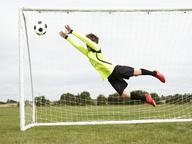
The English Abroad 3 - More than One at a Club [1] Quiz
Many England internationals have played for European clubs; and some of those clubs had more than one England player play for them. Can you match the players here with the European clubs they represented (Part 1 of 2)
A classification quiz
by Red_John.
Estimated time: 3 mins.
- Home
- »
- Quizzes
- »
- Sports Trivia
- »
- UK
- »
- UK Football Players